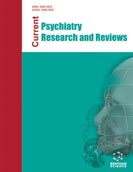Abstract
Being a historical issue that withstands multiple societal control measures, alcohol abuse remains a major healthcare problem. Despite worldwide efforts to limit consumption and educate people about its effects, consumption rates remain unchanged. Alcohol abuse arises from chronic alcohol exposure-caused permanent synaptic plasticity changes in the brain. These manifest in life-threatening withdrawal symptoms and drive relapse even after detoxification and treatment. Since ethanol has multiple targets in the human brain, it warrants a multiapproach therapy; here, we introduce the potential therapeutic effects of glycine transporter subtype 1 inhibitors. We have listed the various glycine transporter 1 inhibitors used in studies of alcoholism and how they influenced glycine release from rat hippocampus was demonstrated in a preliminary study. Glycine transporters modulate both glutamatergic and glycinergic pathways: (i) glutamatergic neurotransmission plays an important role in the development of chronic changes in alcoholism as daily alcohol administration was shown to increase N-methyl-D-aspartic acid receptor activity long-term, and (ii) ethanol has access to the dopaminergic reward system via glycine receptors, being an allosteric modulator of glycine receptors. This manuscript summarises the progress and development of glycine transporter 1 inhibitors, characterizing them by their mode of action adverse effects, and discusses their clinical applicability. Furthermore, we highlight the progress in the latest clinical trials, outline currently applied treatment methods, and offer suggestions for implementing glycine transporter 1 inhibitors into the long-term treatment of alcohol abuse.
Keywords: GlyT1 inhibitors, NMDA receptors, glycine, alcohol abuse, reward system in alcoholism, treatment of alcoholism, HIV/AIDS.
[PMID: 376124]
[http://dx.doi.org/10.1038/nrd3893] [PMID: 24172334]
[http://dx.doi.org/10.1152/physrev.00042.2003] [PMID: 15383648]
[http://dx.doi.org/10.1016/B978-012148660-0/50012-3]
[http://dx.doi.org/10.1007/s00424-003-1064-5] [PMID: 12719981]
[http://dx.doi.org/10.1016/j.tips.2006.05.003] [PMID: 16762425]
[http://dx.doi.org/10.1556/APhysiol.99.2012.1.1] [PMID: 22425803]
[http://dx.doi.org/10.1016/S0896-6273(00)80901-0] [PMID: 10719892]
[http://dx.doi.org/10.1016/j.brainresbull.2012.12.002] [PMID: 23266673]
[http://dx.doi.org/10.1074/jbc.M609158200] [PMID: 17383967]
[http://dx.doi.org/10.1523/JNEUROSCI.4240-08.2009] [PMID: 19193893]
[http://dx.doi.org/10.1016/j.neuint.2007.06.030] [PMID: 17669555]
[http://dx.doi.org/10.2174/092986706776360932] [PMID: 16611082]
[http://dx.doi.org/10.1007/s11064-010-0241-0] [PMID: 20725779]
[http://dx.doi.org/10.1124/mol.60.6.1414] [PMID: 11723250]
[http://dx.doi.org/10.2174/1568026616666160405113340] [PMID: 27048272]
[http://dx.doi.org/10.1016/S0960-894X(01)00355-9] [PMID: 11454468]
[http://dx.doi.org/10.1124/mol.108.049312] [PMID: 18815213]
[http://dx.doi.org/10.1038/sj.bjp.0704381] [PMID: 11724748]
[http://dx.doi.org/10.1016/j.bcp.2010.07.004] [PMID: 20637735]
[http://dx.doi.org/10.1016/S0896-6273(03)00672-X] [PMID: 14622582]
[http://dx.doi.org/10.1016/j.brainres.2006.08.089] [PMID: 17010320]
[http://dx.doi.org/10.1016/j.neuropharm.2008.06.016] [PMID: 18602930]
[http://dx.doi.org/10.1016/j.pharmthera.2008.08.004] [PMID: 18805436]
[http://dx.doi.org/10.1124/mi.8.2.7] [PMID: 18403654]
[http://dx.doi.org/10.1186/1755-7682-3-24] [PMID: 20925949]
[http://dx.doi.org/10.1016/j.tins.2007.03.007] [PMID: 17400301]
[http://dx.doi.org/10.1016/j.neuron.2011.01.017] [PMID: 21338877]
[http://dx.doi.org/10.1073/pnas.85.14.5274] [PMID: 2899326]
[http://dx.doi.org/10.1038/nn1578] [PMID: 16251986]
[http://dx.doi.org/10.1038/nrn2234] [PMID: 17948030]
[http://dx.doi.org/10.1093/alcalc/agg005] [PMID: 12554605]
[http://dx.doi.org/10.1097/FBP.0b013e3282f3cf70] [PMID: 18195589]
[http://dx.doi.org/10.4103/0971-6866.132750] [PMID: 24959010]
[http://dx.doi.org/10.1176/ajp.152.3.332] [PMID: 7864257]
[http://dx.doi.org/10.1001/archpsyc.63.9.957] [PMID: 16952998]
[http://dx.doi.org/10.1093/alcalc/34.2.197]
[http://dx.doi.org/10.1111/j.1369-1600.2008.00136.x] [PMID: 18855799]
[PMID: 8229752]
[http://dx.doi.org/10.1007/BF02245485] [PMID: 1365677]
[http://dx.doi.org/10.1523/JNEUROSCI.3371-07.2007] [PMID: 18003850]
[http://dx.doi.org/10.1016/0006-8993(93)90004-7] [PMID: 8221085]
[http://dx.doi.org/10.1097/01.ALC.0000150012.09608.81] [PMID: 15654288]
[http://dx.doi.org/10.1038/38738] [PMID: 9311780]
[http://dx.doi.org/10.1111/j.1749-6632.1992.tb25986.x] [PMID: 1385933]
[http://dx.doi.org/10.1016/0304-3940(93)90501-B] [PMID: 8100051]
[http://dx.doi.org/10.1523/JNEUROSCI.5077-03.2004] [PMID: 14973247]
[http://dx.doi.org/10.1515/REVNEURO.2001.12.2.141] [PMID: 11392455]
[http://dx.doi.org/10.1097/ADM.0b013e318156c26f] [PMID: 21768946]
[http://dx.doi.org/10.1007/s00018-018-2837-5] [PMID: 29766217]
[http://dx.doi.org/10.1098/rstb.2013.0601] [PMID: 25225095]
[http://dx.doi.org/10.1038/nrn3504] [PMID: 23686171]
[http://dx.doi.org/10.1113/jphysiol.2006.123570] [PMID: 17185337]
[http://dx.doi.org/10.1016/j.neuroscience.2008.04.045] [PMID: 18538939]
[http://dx.doi.org/10.1038/s41598-017-03287-7] [PMID: 28596523]
[http://dx.doi.org/10.1016/j.cell.2012.06.029] [PMID: 22863013]
[http://dx.doi.org/10.1126/science.1101128] [PMID: 15448254]
[http://dx.doi.org/10.1126/science.1083970]
[http://dx.doi.org/10.1016/j.neuint.2011.08.017] [PMID: 21906644]
[http://dx.doi.org/10.1016/j.jpsychires.2010.03.013] [PMID: 20427053]
[http://dx.doi.org/10.1016/j.fct.2011.09.016] [PMID: 21963952]
[http://dx.doi.org/10.1016/j.neuint.2009.08.001] [PMID: 19666071]
[http://dx.doi.org/10.3390/ijms22126209] [PMID: 34201404]
[http://dx.doi.org/10.1016/S0169-328X(97)00126-5] [PMID: 9387867]
[http://dx.doi.org/10.1113/jphysiol.2009.168757] [PMID: 19433577]
[http://dx.doi.org/10.1523/JNEUROSCI.2268-10.2010] [PMID: 20668202]
[http://dx.doi.org/10.1111/j.1471-4159.2008.05476.x] [PMID: 18485105]
[http://dx.doi.org/10.1055/s-0029-1220690]
[http://dx.doi.org/10.3389/fpsyt.2011.00008] [PMID: 21556278]
[http://dx.doi.org/10.1093/alcalc/agl085] [PMID: 17098748]
[http://dx.doi.org/10.1007/s00702-017-1685-z] [PMID: 28161754]
[http://dx.doi.org/10.1021/cn100017a] [PMID: 22778822]
[http://dx.doi.org/10.1111/j.1530-0277.2009.00938.x] [PMID: 19389199]
[http://dx.doi.org/10.1016/j.biopsych.2010.05.029] [PMID: 20655511]
[http://dx.doi.org/10.1007/s00213-010-1825-8] [PMID: 20352414]
[http://dx.doi.org/10.1007/978-3-642-28720-6_205] [PMID: 22389180]
[http://dx.doi.org/10.1111/j.1369-1600.2011.00367.x] [PMID: 21955180]
[http://dx.doi.org/10.1111/j.1369-1600.2010.00276.x] [PMID: 21040237]
[http://dx.doi.org/10.1038/npp.2010.203] [PMID: 21124304]
[http://dx.doi.org/10.1016/j.bcp.2007.06.039] [PMID: 17706608]
[http://dx.doi.org/10.1016/j.bbr.2009.09.035] [PMID: 19799936]
[http://dx.doi.org/10.1038/npp.2012.155] [PMID: 22948980]
[http://dx.doi.org/10.1016/j.drugalcdep.2011.09.017] [PMID: 21992874]
[http://dx.doi.org/10.1016/j.neuropharm.2005.01.002] [PMID: 15829254]
[http://dx.doi.org/10.1038/npp.2009.93] [PMID: 19675534]
[http://dx.doi.org/10.1016/S0091-3057(02)01078-X] [PMID: 12667895]
[http://dx.doi.org/10.1038/nature01497] [PMID: 12646920]
[http://dx.doi.org/10.1001/jamapsychiatry.2014.163] [PMID: 24696094]
[http://dx.doi.org/10.1016/j.brainres.2011.03.051] [PMID: 21443867]
[http://dx.doi.org/10.1038/npp.2012.212] [PMID: 23132267]
[http://dx.doi.org/10.1016/S0924-977X(11)70841-0]
[http://dx.doi.org/10.1007/s00213-013-3260-0] [PMID: 24051602]
[http://dx.doi.org/10.1016/j.ejphar.2012.04.013] [PMID: 22542656]
[http://dx.doi.org/10.1016/j.neuropharm.2011.11.008] [PMID: 22138164]
[http://dx.doi.org/10.1111/bcp.12015] [PMID: 23116363]
[http://dx.doi.org/10.1038/clpt.2011.154] [PMID: 21866096]
[http://dx.doi.org/10.1007/s11373-006-9118-2] [PMID: 17061147]
[http://dx.doi.org/10.1111/acer.12501] [PMID: 25257291]
[http://dx.doi.org/10.1016/j.biopsych.2016.11.014] [PMID: 28117049]
[http://dx.doi.org/10.2174/1381612819666140110120015] [PMID: 24410565]
[http://dx.doi.org/10.3390/ijms161024475] [PMID: 26501260]
[http://dx.doi.org/10.7895/ijadr.v2i2.89]
[http://dx.doi.org/10.1111/j.1521-0391.2003.tb00543.x] [PMID: 14504021]
[http://dx.doi.org/10.1016/j.drugalcdep.2008.07.018] [PMID: 18819759]
[http://dx.doi.org/10.1002/iub.128] [PMID: 18798526]












